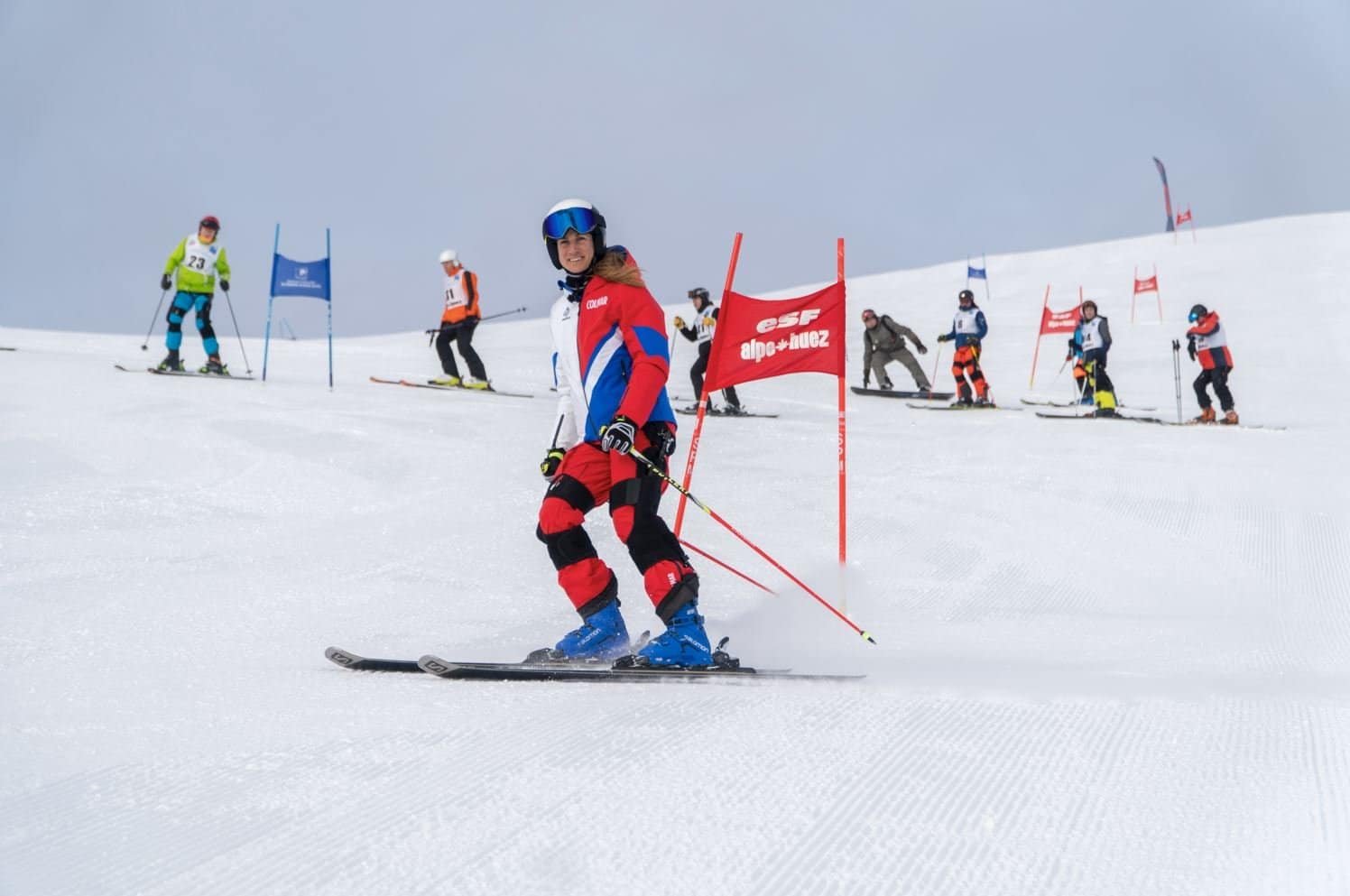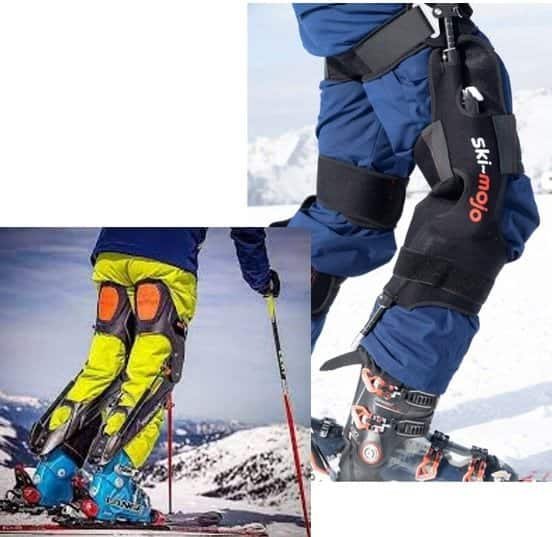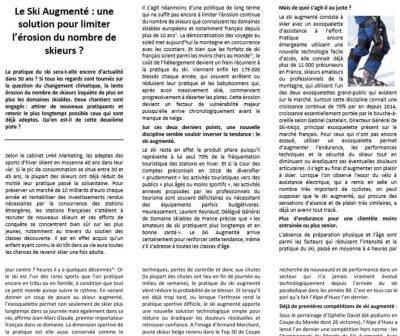Augmented Skiing: a solution to slow down the steady erosion of skier numbers?
Will skiing still be relevant in 50 years? While all eyes are on climate change, the slow erosion of skier numbers is increasingly worrying ski resorts. Two strategies are underway: attracting new participants and retaining for as long as possible those who are already enthusiasts. What about this second approach?
According to LHM Marketing, winter sports enthusiasts ski for an average of 40 years in their lifetime. While consumption peaks between the ages of 30 and 45, most skiers have already halved their activity by the time they reach their sixties. To preserve a €10 billion annual market and make profitable the investments required due to competition from foreign resorts, French resorts are striving to recruit new skiers, with efforts naturally focusing on the youngest through the support of school discovery classes. It is well established that a child who experiences skiing early in life will almost certainly return as an adult.
Nevertheless, this is a long-term policy that is not yet enough to curb the erosion of skier numbers that European and especially French ski resorts have been facing for over 10 years. The democratization of sunny holidays today puts the mountains in competition with palm trees. And although French ski passes are among the cheapest in the world, accommodation costs are a recurring obstacle. Finally, there are 175,000 injuries each year, often leading people to stop or reduce their skiing, and baby boomers, once regular skiers, are progressively leaving the slopes. This erosion is becoming a major challenge as it occurs chronologically before the lack of snow.
On these last two points, a new discipline could reverse the trend: Augmented Skiing.
Skiing remains the flagship product, representing 70% of winter tourist attendance at resorts. And while the French Court of Auditors recommended in 2018 to diversify tourist activities “prudently” towards “older or less athletic” audiences, the additional activities offered by tourism professionals are often loss-making or require costly equipment. Fortunately, Laurent Reynaud, General Delegate of Domaines Skiables de France, notes that “ski enthusiasts ski longer and in good health.” Augmented Skiing is certainly arriving to reinforce this trend, even though it is suitable for all age groups.
But what exactly is it?
Augmented skiing consists of skiing with an exoskeleton that assists effort. Still an emerging practice using new, easily accessible technology, it already has more than 10,000 pioneers in France — amateur skiers and mountain professionals — who use one of the two consumer exoskeletons currently on the market. Above all, this discipline has been experiencing continuous growth of 75% per year since 2014, growth mainly driven by word of mouth, according to Gabriel Castelain, CEO of Ski~Mojo, the main exoskeleton present on the French market. For those who have not yet tried, using an exoskeleton increases endurance, technical performance and skier safety while reducing or eliminating joint pain. Ultimately, it’s about increasing skiing pleasure. When we look at the boom in electric bikes, which brought a very large number of cyclists back into the saddle, we can imagine that augmented skiing, which provides very similar sensations of ease and pleasure, already has a bright future ahead.


More endurance for a less trained or older clientele
Lack of physical preparation and age are among the factors that reduce skiing intensity and practice, now averaging 4 hours per day compared to 7 hours a few decades ago. Skiing is one of the rare sports still practiced in tribes or families, provided everyone can keep up with the pace. By giving a boost to the augmented skier, the exoskeleton not only allows skiing longer during the day but also throughout life, says Jean-Marc Glaude, the first European importer in this field. The sporting dimension of skiing is also preserved, as confirmed by sports doctor Dr. Benoist Janvier: “The effort is still present but less intense because in the end it is nothing more than a simulation of weight loss.”
Avoiding injuries and bringing the injured back
According to the Association of Mountain Doctors, 150,000 to 200,000 skiers are injured each year, representing about 2.5% of all skiers. More than a third of these injured suffer knee injuries, with a risk of anterior cruciate ligament rupture 3.5 times higher in women over 25 than in men. In addition to the sometimes significant injuries, there is generally a latent apprehension that also contributes to the erosion of skier numbers. On the prevention side, by delaying fatigue — which predisposes to technical errors, loss of control and therefore falls (most falls occur at the end of the day or mid-week) — augmented skiing reduces the probability of injury.
And when it’s already too late, or when osteoarthritis makes sports difficult, augmented skiing offers a simple new technological solution to reduce or eliminate residual pain and restore confidence. Like Belgian skier Armand Marchant, who returned to the World Cup Top 30 after a serious injury in 2017 thanks to using an exoskeleton during re-athleticization, and who still uses it outside competitions. On these two parameters, ski resorts thus have the possibility of retaining more than 200,000 skiers each year and thus putting an end to the erosion of skier numbers.
“To become a skier, you need to be introduced by someone,” says Jean-Pierre Rougeaux, mayor of Valloire and secretary general of the National Association of Mayors of Mountain Resorts (ANMSM). And it is precisely to this clientele of ski lovers eager to pass on their passion that Augmented Skiing provides a solution. Resorts also have the opportunity to create a new recreational discipline for customers of all ages looking for novelty and performance in a sector that has not really evolved technologically since the arrival of parabolic skis in the 1990s. This is, in any case, the gamble taken by Alpe d’Huez last year.
The first Augmented Skiing competitions
Under the sponsorship of Ophélie David (64 World Cup podiums, including 26 victories), Alpe d’Huez launched an extraordinary competition last year: the Augmented Skiing World Championships. With participants from France, Canada, the United Kingdom, Belgium and even Australia, this event, currently open to all, brought together about fifty participants aged 24 to 81. Ophélie David expects at least twice as many on January 16 and 17; registrations are already open.

